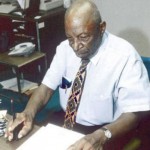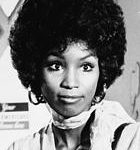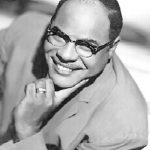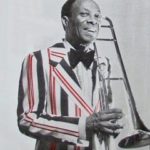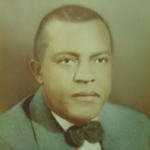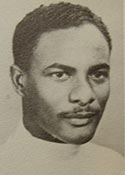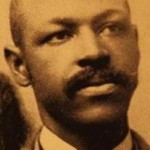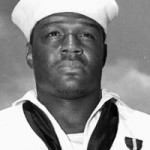The Battle to Rewrite Texas History
While a new generation of scholars is correcting the historical record, supporters of the traditional narratives are fighting to keep their grip on the public imagination.
Illustration by David Palumbo
(Texas Monthly) On the mild, cloudy day of April 14, 2015, exactly 150 years and five days after Confederate general Robert E. Lee surrendered to the Union Army at a courthouse in Virginia, an unusual spectacle took place in a committee room inside the Texas Capitol, the grounds of which are adorned with towering monuments and paeans to the slave empire’s army. A thirteen-year-old middle school student from Austin named Jacob Hale was defending a bill, drafted by him and given to his state representative, that would correct what he regarded as a grievous mistake: The state of Texas celebrates a holiday called Confederate Heroes Day, on January 19, Lee’s birthday. That year, as sometimes happens, it fell on Martin Luther King Jr. Day. Young Hale, testifying at a House committee meeting, explained in his prepared remarks that he didn’t want to erase the holiday; he wanted to change its name to “Civil War Remembrance Day” and move the date so that future overlaps could be avoided. “Many Texans were also killed for allegedly having pro-Union sentiments,” Hale said, noting that Confederate soldiers weren’t the only people who should be remembered. Broadening the scope of the holiday would make it “a more accurate symbol of our state’s diverse history.”
Testifying against the bill was a long succession of older men and women, some of whom called the boy deluded and naive. “We don’t have as many heroes as we used to,” said John McCammon, who testified on behalf of “myself and my Confederate ancestors.” Rudy Ray, another member of the Sons of Confederate Veterans, said Hale’s bill threatened to do “great damage to our heritage.”
But whose heritage is “our heritage,” exactly? Texans have a much stronger sense of their history than the citizens of any other state, and that shared vocabulary seeps into our public life. But many Texans’ knowledge of the state’s past is focused on what happened during six months in 1836, when the Texas Revolution was fought, and what occurred between 1860 and 1865, when we tried to extricate ourselves from the Union. (It is perhaps telling that 1846, the year that Texas entered the Union, does not loom so large.) Even today, the lowest insult one Texas politician can hurl at another is to compare him to Moses Rose, the man who left the Alamo before the fighting started—a slur that Lieutenant Governor Dan Patrick directed at House Speaker Joe Straus, a fellow Republican, in 2017.
If you’re one of the Texans interested in the centuries other than the nineteenth, though, you’re in luck. Academics are producing more and better studies and stories than ever before about previously untold parts of our history—and reevaluating the eras we already know so much about. They, and many of their amateur counterparts, are breathing life into widely forgotten or poorly understood events that shaped the state. They are correcting long-held misperceptions and figuring out where the bodies are buried—sometimes literally. (more)
African-American and Women’s History to be Demolished at Austin State Hospital
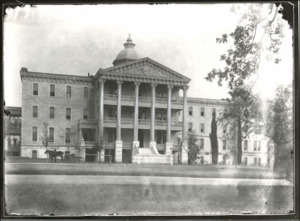
The Main Building was opened in 1861, and expanded numerous times. Until the 1890s, black women were inhumanely housed in the basement.
(Preservation Texas) Imagine a newly constructed 21st-century brain health facility at the historic Austin State Hospital (“ASH”) surrounded by grassy parks, pecan groves, and restored historic buildings built between 1860 and 1960 that are part of a National Register Historic District in the heart of Austin. The historic buildings house medical students, nonprofit offices and other services in support of the brand new facility nestled within a nationally significant cultural landscape.
Now imagine that half of those historic buildings, including the only two surviving structures on the ASH campus built for African-American patients (1936 African-American Women’s Dorm and 1952 African-American Dining Hall), are demolished to make room for the new building. Imagine that the 1917 Laundry and Dormitory, the 1930 Mattress Factory and the 1937 Ice Plant are all demolished, too, while the 1899 Power Plant next door awaits future demolition.
On Thursday, October 3, 2019, officials from the Texas Department of Health and Human Services and Dell Medical School will celebrate a long-overdue groundbreaking for just such a new facility dedicated to 21st-century brain health at ASH. This is an important investment that Texans should be proud of, as the current patient facilities at ASH are embarrassingly out of date and reflect poorly on the high quality of service that the dedicated medical and mental health professionals at ASH thanklessly devote themselves to so that some of central Texas’ poorest and most mentally ill patients can be cared for. For too long, mental health has been treated as a law enforcement issue, and this badly needed new facility will help reorient our understanding and treatment of mental health issues in a very positive way.
What is shameful to us is that the site selected for this new facility will result in the demolition of the 1936 African-American Women’s Dorm, the 1952 African-American Dining Hall, the 1917 Laundry and Dormitory, the 1930 Mattress Factory and the 1937 Ice Plant, all of which have been recognized by the Texas Historical Commission as eligible for inclusion in a National Register Historic District on the historic ASH campus. (more)
First General Conference speech by an African American general authority thrills black Latter-day Saints
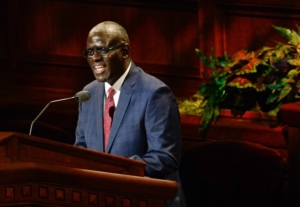
(Francisco Kjolseth | The Salt Lake Tribune) Peter M. Johnson, general authority Seventy of The Church of Jesus Christ of Latter-day Saints, speaks to the congregation of the 189th Semiannual General Conference in Salt Lake City on Sunday, Oct. 6, 2019.
(The Salt Lake Tribune) Jerri Harwell was listening to Sunday’s final session of General Conference when suddenly she stopped packing for an upcoming move and turned her head to see who was at the pulpit.
“That,” thought the Salt Lake City author and college professor for The Church of Jesus Christ of Latter-day Saints, “doesn’t sound like a typical general authority.”
There, on the screen, was Elder Peter M. Johnson warning of the dangers of the devil and encouraging church members to read and study the faith’s signature scripture, the Book of Mormon, “every day, every day, every day.”
At that moment, Harwell — and other Latter-day Saints in Utah and around the world — witnessed church history. It was the first time a General Conference sermon was delivered by a black man born in the United States. (more)
TIPHC Bookshelf
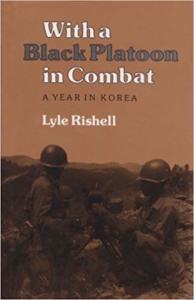 Published scholarship on black history in Texas is growing and we’d like to share with you some suggested readings, both current and past, from some of the preeminent history scholars in Texas and beyond. We invite you to take a look at our bookshelf page – including a featured selection – and check back as the list grows. A different selection will be featured each week. We welcome suggestions and reviews. This week, we offer, “With a Black Platoon in Combat, A Year in Korea,” by Lyle Rishell.
Published scholarship on black history in Texas is growing and we’d like to share with you some suggested readings, both current and past, from some of the preeminent history scholars in Texas and beyond. We invite you to take a look at our bookshelf page – including a featured selection – and check back as the list grows. A different selection will be featured each week. We welcome suggestions and reviews. This week, we offer, “With a Black Platoon in Combat, A Year in Korea,” by Lyle Rishell.
The first year of the Korean Conflict was a dark and humiliating period for many of the troops who fought there. Against a backdrop of U.S. political indecision and reduced military capability, American soldiers fought a dedicated and numerically strong enemy force that was determined to overrun South Korea. One of these units, the segregated 24th Infantry Regiment, was made up of black soldiers commanded for the most part by white officers. Lyle Rishell, an infantry platoon leader, led a black platoon of Able Company in that regiment. This book tells the dramatic, often frustrating, sometimes heroic story of that platoon in that first, fateful year of war.
From detailed notes he made at the time, and from his memories of those days, Rishell reconstructs the deployment and tactics of his unit, its day-to-day actions and survival. The story that unfolds is one of honor, fear, fighting spirit, fierce combat, and the cries of wounded men.
The 24th Infantry Regiment has received bad press from many historians of the Korean War, who claim that the black soldiers and noncommissioned officers were undisciplined and even cowardly in battle. Rishell’s moving account, based on his own experiences, describes his men as no better or worse than any other infantrymen in the first year in Korea. His troops fought well from July, 1950, to May, 1951, in nearly constant frontline action against the North Koreans and the Chinese Communists, despite a variety of significant fundamental obstacles, including the racial prejudice of much of their own army.
It is a unique and compelling story of the relationship of a white officer and black soldiers before integration of the services and the civil rights legislation of the sixties. It is also an important corrective to a poorly understood aspect of one of America’s most dismal conflicts.
This Week in Texas Black History
Oct. 7
George McElroy, “Mr. Mac”, the first black columnist for the Houston Post, died on this day in 2006. A Houston native, McElroy was also the first African-American to earn a master’s degree in journalism from the University of Missouri, which he attended on a scholarship from the Wall Street Journal. McElroy began his career at age 16 earning $2 a week writing a youth column for the Houston Informer, the city’s oldest black newspaper. Years later, he became the paper’s executive editor. McElroy, the recipient of numerous honors, taught journalism at Houston’s black high schools, as well as Texas Southern University (his alma mater) and the University of Houston.
Oct. 9
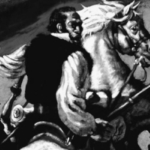 On this day in 1835, Samuel McCulloch, a free black man, participated in the first offensive action of the Texas Revolution, in Goliad, and is considered the war’s first casualty. McCulloch was born on Oct. 11, 1810 in Abbeville, South Carolina and came to Texas with his father, who was white. McCulloch joined the Matagorda Volunteer Company as a private and was severely wounded in the right shoulder during the Goliad confrontation as the Texans stormed the Mexican officers’ quarters. McCulloch was the only Texan wounded in the battle.
On this day in 1835, Samuel McCulloch, a free black man, participated in the first offensive action of the Texas Revolution, in Goliad, and is considered the war’s first casualty. McCulloch was born on Oct. 11, 1810 in Abbeville, South Carolina and came to Texas with his father, who was white. McCulloch joined the Matagorda Volunteer Company as a private and was severely wounded in the right shoulder during the Goliad confrontation as the Texans stormed the Mexican officers’ quarters. McCulloch was the only Texan wounded in the battle.
Oct. 10
Singer and actress Teresa Graves died in a fire at her Hyde Park (Los Angeles) home on this day in 2002 at age 54. Graves, a Houston native, was a regular on “Rowan & Martin’s Laugh-In” comedy show in 1969 and 1970. She also starred in the television police drama “Get Christie Love” in 1974-75, making her the first black actress to have her own hour-long dramatic TV series.
Oct. 10
On this day in 1914, Ivory Joe Hunter, R&B singer and songwriter was born in Kirbyville. Hunter was a teenager when he began touring as a musician. His first of several hit songs was “I Almost Lost My Mind,” which topped the R&B charts in 1950 and later that year “I Need You So” reached number 2. In 1957, “Since I Met You Baby” reached No. 1 and “Empty Arms” reached No. 2. Later in his career, he turned to country and western music and regularly appeared at the Grand Old Opry. A prolific songwriter, it’s estimated that Hunter penned more than 7,000 songs. Elvis Presley recorded two of Hunter’s songs that made the Top 20, “My Wish Came True” and “Ain’t That Loving You Baby.” And, in 1970, Sonny James cover of “Since I Met You Baby” was No. 1 on the country charts. Hunter is honored as a music legend in the Museum of the Gulf Coast’s Music Hall of Fame in Port Arthur. A Texas Historical marker honoring Hunter was erected near Magnolia Springs in Jasper County in 2009.
Oct. 10
Milt Larkin, bandleader and self-taught jazz trumpeter, was born on this day in 1910 in Navasota. Larkin began playing trumpet at age 16 and only 10 years later formed his own band in Houston after playing with Chester Boone. Larkin’s group, known as “the last of the great Texas bands,” included saxophonists Illinois Jacquet and Arnett Cobb and was compared favorably with Jimmie Lunceford and Cab Calloway. His popularity grew in New York where he led house bands at the Apollo Theater and the Celebrity Club.
Oct. 11
On this day in 1930, Clifton Richardson founded and became editor/publisher of the Houston Defender, a weekly newspaper focusing on the city’s black community. Richardson had the same roles in 1919 with the Houston Informer. He was also a vocal supporter of civil rights and was a founding member of the Civic Betterment League (CBL) of Harris County and founding member and later president of Houston’s NAACP chapter.
Oct. 12
On this day in 1950, Herman A. Barnett, III, an Austin native, enrolled as a regular student of the University of Texas Medical Branch in Galveston becoming the school’s first black student. However, in the previous year, Barnett had been accepted to the school but as a student in Houston at Texas State University for Negroes (now Texas Southern University), attending UTMB under a contract program between the schools. The program was stopped after the Veterans Administration (Barnett’s tuition was covered by the GI Bill) refused to recognize the contract system and Barnett’s attorney threatened legal action. Barnett became a prominent surgeon and anesthesiologist and was a graduate of Huston College (now Huston-Tillotson University) in Austin. During WWII, he was a Tuskegee Airman (332nd Fighter Group) and in 1968, became the first African-American to serve on the Texas State Board of Medical Examiners. In 1973, he was the first black elected president of the Board of Trustees of the Houston Independent School District.
Oct. 12
Physician Monroe Alpheus Majors was born on this day in 1864 in Waco. Majors was also a civil rights leader and writer. He attended Tillotson College (now Huston-Tillotson University) in Austin, but graduated from Central Tennessee College in Nashville then enrolled at Meharry Medical College and graduated as salutatorian of his class in 1886. He was one of the founders of the Lone Star State Medical, Dental, and Pharmaceutical Association, one of the first medical societies in the country for black physicians. In 1888, fearing for his life after racist threats because of his influence in the community, he moved to Los Angeles and became the first black physician to practice medicine west of the Rocky Mountains. He returned to Waco in 1890 to practice medicine and serve as lecturer in hygiene and sanitation at Paul Quinn College, and also built and operated a hospital for blacks. As a writer, he published Noted Negro Women (1893), a book of biographies of prominent black women of the period, and in 1921 wrote First Steps and Nursery Rhymes, the first book of nursery rhymes written specifically for black children.
Oct. 12
On this day in 1919, Pearl Harbor hero Doris (Dorie) Miller was born in Waco. Miller was a mess man aboard the USS West Virginia when the Japanese attacked on Dec. 7, 1941. Miller moved several wounded sailors to safety and then manned an anti-aircraft gun, for which he had no training, and fired at attacking planes. For his actions, Miller was the first African-American to be awarded the Navy’s second highest honor, the Navy Cross. (Note: Please see TIPHC Bookshelf for “Doris Miller, Pearl Harbor, and the Birth of the Civil Rights Movement.”)
Blog: Ron Goodwin, Ph.D., author, PVAMU history professor
Ron Goodwin is an assistant professor of history at Prairie View A&M University. Even though he was a military “brat,” he still considers San Antonio home. Like his father and brother, Ron joined the U.S. Air Force and while enlisted received his undergraduate degree from Texas Lutheran University in Seguin, Texas. After his honorable discharge, he completed graduate degrees from Texas Southern University. Goodwin’s book, Blacks in Houston, is a pictorial history of Houston’s black community. His most recent book, Remembering the Days of Sorrow, examines the institution of slavery in Texas from the perspective of the New Deal’s Slave Narratives.
Recent Posts
1960s Revisited
Over the last few years our society has spent a great amount of energy reliving and analyzing the 1960s. Every event – from the deaths of the Kennedy brothers, MLK and Malcolm X, landing on the moon, war protests, and the hippie revolution – has been scrutinized through the microscope of history. The interesting thing about history’s microscope, though, is that it often blots out the nasty and the ugly. The concept of revisionism centers…(more)
We owe them reverence
Given the infinite nature of the Universe, four hundred years is merely a blink of the eye. But the human existence is not infinite. We understand that from the moment we take our first breath out of our mothers’ wombs, our journey begins towards that moment when we take our last breath. So, for us whose existence is finite, we consider four hundred years a mighty long time. We really know very little about those…(more)
Submissions wanted
Historians, scholars, students, lend us your…writings. Help us produce the most comprehensive documentation ever undertaken for the African American experience in Texas. We encourage you to contribute items about people, places, events, issues, politics/legislation, sports, entertainment, religion, etc., as general entries or essays. Our documentation is wide-ranging and diverse, and you may research and write about the subject of your interest or, to start, please consult our list of suggested biographical entries and see submission guidelines. However, all topics must be approved by TIPHC editors before beginning your research/writing.
We welcome your questions or comments. Please contact Michael Hurd, Director of TIPHC, at mdhurd@pvamu.edu.

